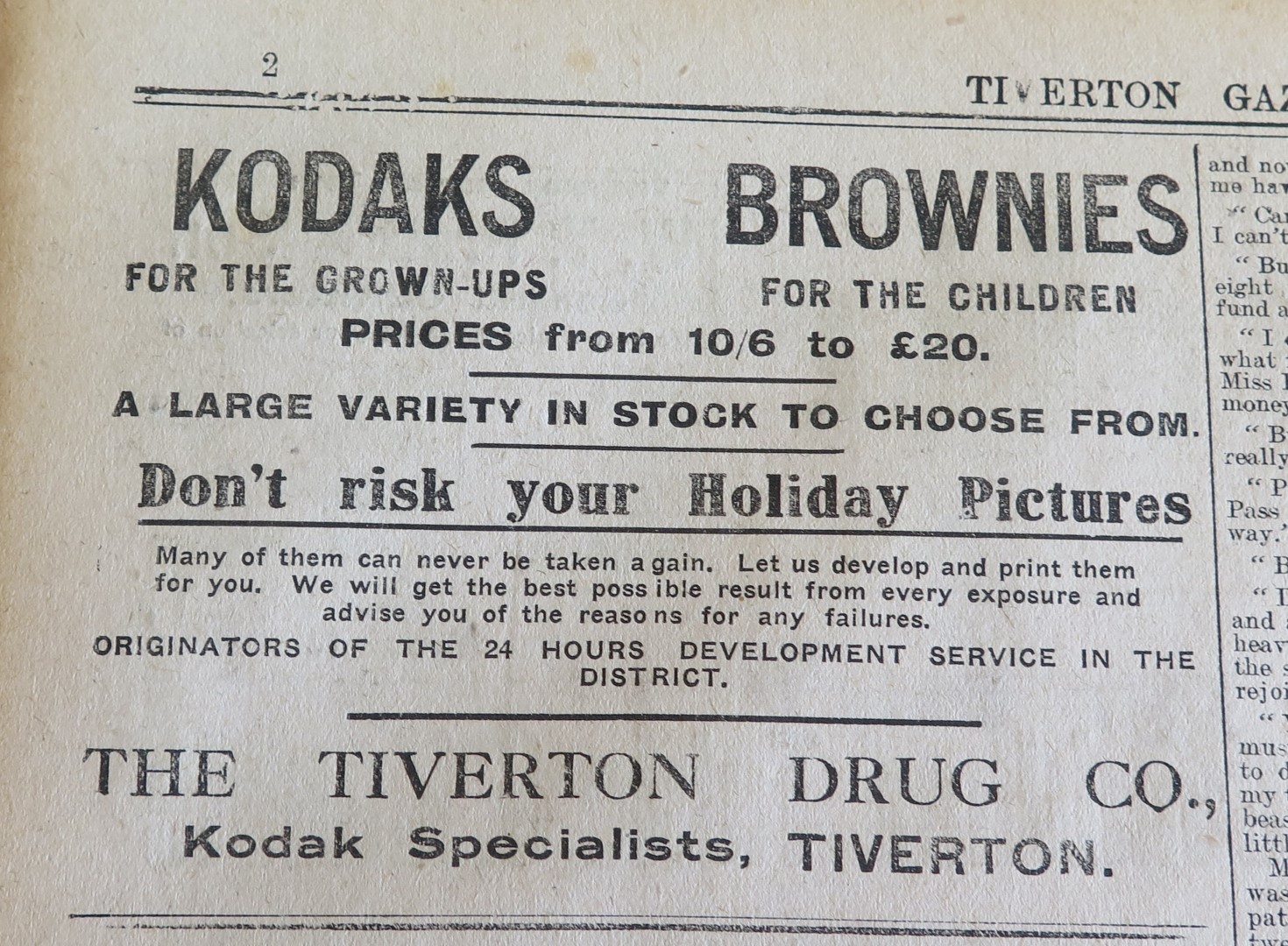Kodak opened its first factory outside the USA in Harrow, Middlesex, in 1890. Initially it concentrated on developing film but later produced film rolls and photographic paper. It was also the European Research and Development Centre. At its peak, in the mid-20th century, the factory employed 6,000 people. The advent of digital photography led to gradual decline; the production of film ended in 2005 and the factory eventually closed in 2016.
The 1920s saw a big increase in home photography as the cost of a camera became a little more affordable. Entering ‘Kodak’ in the main Museum catalogue brings up 49 items ranging from both still and cine cameras to film, development equipment and accessories.
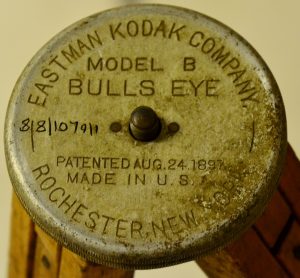
Base plate of a tripod
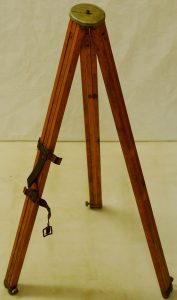
Wooden tripod showing where the base plate sits
The base plate of this tripod with wooden legs and brass fittings shows the patent date of 1897. It extends from 28 to 52 inches and weighs 1lb 9ozs (just over 700grms).
We have examples of Kodak 1, 2 and 3 models.
The Kodak Folding Pocket No 1 was produced for a short time at the end of 1890s. Our example is in a case which shows that in 1908 it belonged to Mabel M Addison who lived in Northwood, Middlesex.
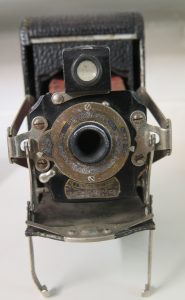
Kodak Folding Pocket No.1
The Kodak No 2a Folding Autographic Brownie was made in Kodak’s Canadian factory between 1915 and 1926. Kodak’s adverts for the Autographic range states ‘You can now date and title your negatives, permanently, and almost instantly at the time you make them’. The photo shows the back of the camera and the flap you could open to ‘autograph’ the negative.
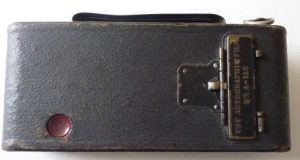
The Kodak No.2A
The Kodak No 3 folding pocket camera took 12 photos on 118 film. Our camera has the distinctive red bellows which dates it to between 1909 and 1914.
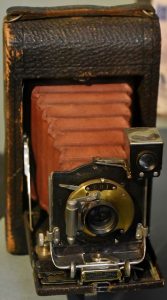
The Kodak No.3
Researched and written by museum volunteer Sue.

